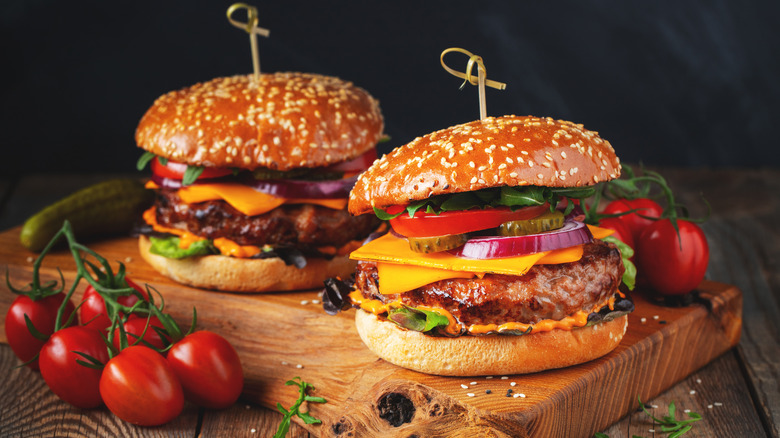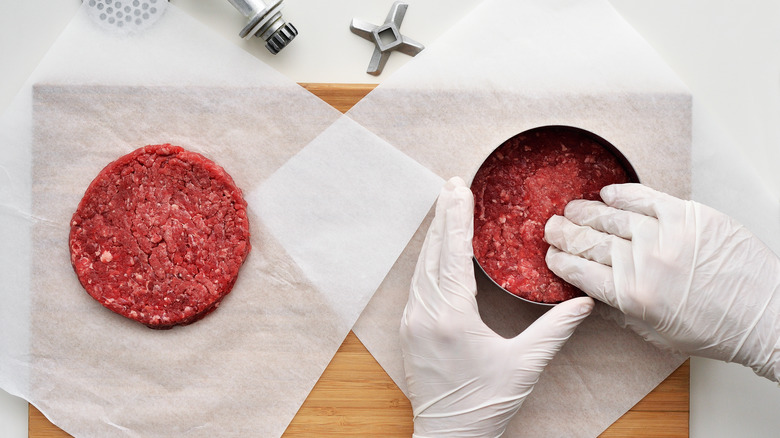How A Ring Mold Can Help You Make Better Burgers
When it comes to the perfect burger, there are hundreds of tips and opinions on the matter. Professional chefs and amateurs will insist upon a certain percentage of fat in the ground beef, if flavorings should be added to the meat, what type of cheese to use, lots of toppings or the bare minimum, fat patties or smashed burgers – the list goes on. In the end, the perfect burger comes down to the opinion of who is eating it, but it can be assumed that burger lovers agree on one thing: the patty should be perfect. A dry, under-seasoned, gray hamburger patty with edges that are falling apart can make any carnivore cry into their french fries.
With experience, creating a perfect patty can become second nature, but it does take time and experience to get to such a point. You may form the best-looking patty you've ever seen and place it on a hot griddle or grill only to find it shrinking substantially, resulting in a tiny, fat ball of meat too small for its bun. According to the USDA, all meat shrinks when it's cooked. The amount of shrinkage depends on the fat and moisture in the meat, plus the cooking temperature. Fortunately, you can battle these results by not letting your cooking temperature get too high and utilizing a common kitchen gadget: a ring mold.
Using a ring mold guarantees an evenly cooked patty
According to the blog Amazing Food Made Easy, ring molds are metal, circular, handheld gizmos that shape anything from biscuits and perfectly round fried eggs to building stunning layered appetizers, salads, and desserts. You're likely to find them in patisseries and fine dining establishments but hardly in hamburger joints. However, Mark Rosati, the culinary director of Shake Shack (a man who knows a thing or two about building burgers), considers them a staple in his home when it comes to hamburger night. While Shake Shack specializes in smashed burgers, Rosati prefers his flame-grilled patties with a generous amount of height.
Per McCormick, Rosati forgoes the popular practice of hand-forming his patties because they often end up uneven and don't cook properly. Instead, he lines a ring mold with plastic wrap and loosely packs the ground beef inside. Once unmolded, he's left with a patty with a perfectly even thickness and a flat bottom, reducing the opportunity for the meat to puff up during cooking. With a perfect patty, you're on your way to a restaurant-worthy burger. The toppings, however, are just as important. Whether you're going for classic or unexpected, have fun with it and pile them on according to your taste.

